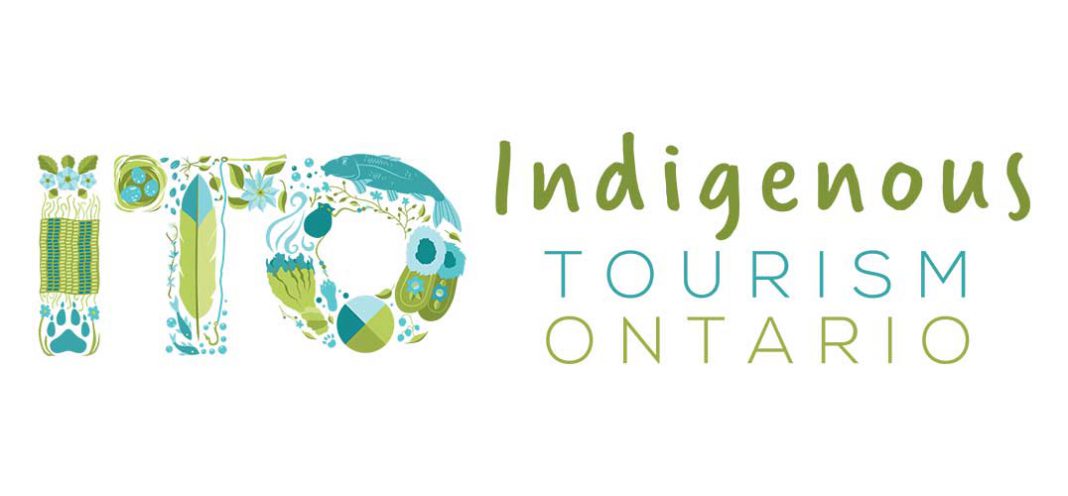AUNDECK OMNI KANING – Indigenous Tourism Ontario (ITO) last week unveiled a five-year strategic plan and COVID-19 recovery framework to offer its members guidance as they adapt to a post-pandemic reality and commit its support to those operators as they rebuild.
“We’ve taken into consideration a lot of the lessons we’ve been learning over the last 15-20 years and implementing things that will help business operators mature a little quicker and also help them diversify their product lines in a good way,” says Kevin Eshkawkogan, president and CEO of ITO.
The Conference Board of Canada estimates the GDP of Indigenous tourism in Ontario could drop by 63 percent and result in the loss of nearly half of all jobs in the sector. This could mean between 200 and 350 business closures and more than 7,500 lost jobs, says ITO.
ITO estimates of pre-pandemic sector data indicate there are more than 600 Indigenous tourism businesses in Ontario supporting 12,000 jobs. This comprises 34 percent of all Indigenous tourism in Canada.
The organization had been preparing to renew its strategic plan this year but has instead gone deeper into measures specific to COVID-19 recovery. Indigenous tourism has only started to break into the mainstream in recent decades, making it more susceptible than established offerings.
Conversely, though, its newness has enabled it to be more responsive than many legacy tourism models.
“Given the current situation, we really had no choice but to take into consideration the effects of COVID-19 on the Indigenous tourism industry,” says Mr. Eshkawkogan. “This will help the Indigenous tourism business and the tourism industry as a whole recoup from these deficits.”
The 20-page plan outlines several areas in which ITO will aid its members, as well as an overview of $9.1 million in spending between now and 2025 across administration, marketing, product development and other key business areas.
The next five years are broken into three phases: preserve, from 2020 to 2021, involving maintaining operators’ livelihoods and making strategic investments alongside non-Indigenous partners; renew, from 2021-2022, focusing on adapting to new trends and aligning to traditional values, as well as product development, marketing, training and fostering cultural authenticity; and rejuvenate, from 2022 to 2025, which focuses on continuing the plan to strengthen businesses and grow the sector.
The phases overlap and continue concurrently. Plans are underway to create an elders’ council and an app-based digital storytelling portal.
“We believe in the resiliency of our people and we know that our members will emerge from this experience with a rejuvenated sense of accomplishment and the opportunities that lie ahead,” reads the planning document.
For the first phase, ITO has hired seven business support brokers to work with its members and gather information about their challenges and the support they require. Four key needs emerged in this process: leadership and advocacy, communication, collaboration and partnerships, financial support and investment, and adaptation and innovation.
Those brokers then tell ITO which areas the organization is best suited to address.
Much of the work in the years ahead will be to rebuild consumer confidence and attempt to draw domestic tourists who may be seeking getaways closer to home. The present downtime will be used to train operators, re-focus and restructure operations and increase efficiency.
Indigenous tourism offerings tend to be naturally tailored to smaller groups and many of them are based on the land—both of which align with public health advice to avoid large gatherings, especially indoors.
Intimate educational experiences, such as through Indigenous tourism, are popular. Mr. Eshkawkogan says supply levels have not been able to keep up with the “unprecedented” demand across Canada, which is higher than ever.
However, Indigenous tourism offerings often exist in remote communities that lack the same health care support resources as urban centres, so trying to draw tourists into vulnerable areas can be questionable if the virus threat has not yet abated.
“Following public health guidelines in discouraging non-essential travel to our remote area (with very limited health services) is a shared responsibility,” says Michelle Savoie of Voyageur Wilderness Programme in Atikokan, quoted in the strategic plan document.
One way to address supply concerns as well as uphold community health responsibilities is to shift to more virtual- and augmented-reality experiences; ITO plans to release further details on virtual tourism developments this week.
“The number one commodity in Indigenous tourism is the business operator themselves and the knowledge they carry. They can help to develop a product but they don’t always have to be physically involved in every experience,” says Mr. Eshkawkogan.
Virtual tourism offerings speak to the final ‘rejuvenate’ phase. ITO seeks to expand the industry to offer traditional on-the-land activities as well as offerings at a distance, with an aim of converting online observers into future tourists.
“The marketplace is opening up in a lot of ways to experience travel while staying at home. We’re looking at ways to … help share the stories of Indigenous peoples in an easier, accessible way,” he adds.
But offering meaningful, authentic experiences can be difficult when traditional knowledge keepers are not directly involved in each offering. This is a challenge ITO has been exploring lately.
“It’s a matter of finding that threshold where we’re not compromising the integrity of our culture while still capitalizing on the content and the new model we’re developing,” Mr. Eshkawkogan says.
The tourism outfit has identified four key pillars or directions to its success, including cultural authenticity, marketing and branding, product development and human resource development. ITO is working with partners like Ontario Tourism Education Corporation to build capacity in its membership, as well as Destination Northern Ontario and Tourism Excellence North.
Mr. Eshkawkogan adds that ITO is working with those partners to share best practices and advice, including creating appropriate content for non-Indigenous operators and making use of tourism industry experts’ best practices in the Indigenous-run market.
“We’re not here to duplicate services; we want to work with our partners in the best way to serve Indigenous tourism operators, communities and the tourism industry as a whole within Ontario,” he says. “We’re not going anywhere—these are our homelands, so we should be involved as part of the solution,” says Mr. Eshkawkogan.
Mr. Eshkawkogan is careful to note that his organization is not being opportunistic during a global crisis, but rather trying to find small positives in a tough time.
“Being prepared leads to us doing a small part for Indigenous people to participate in the economy and manage wealth instead of poverty. Tourism can help with economic reconciliation,” he says.
Indigenous tourism is a promising field, notes Tourism Industry Association of Ontario president Beth Potter.
“Before the onset of COVID-19, Indigenous tourism was the fastest growing sector in our industry,” she stated in an ITO press release. “We know that not only will Indigenous tourism recover, but it will continue to lead and take our industry to new heights.”





